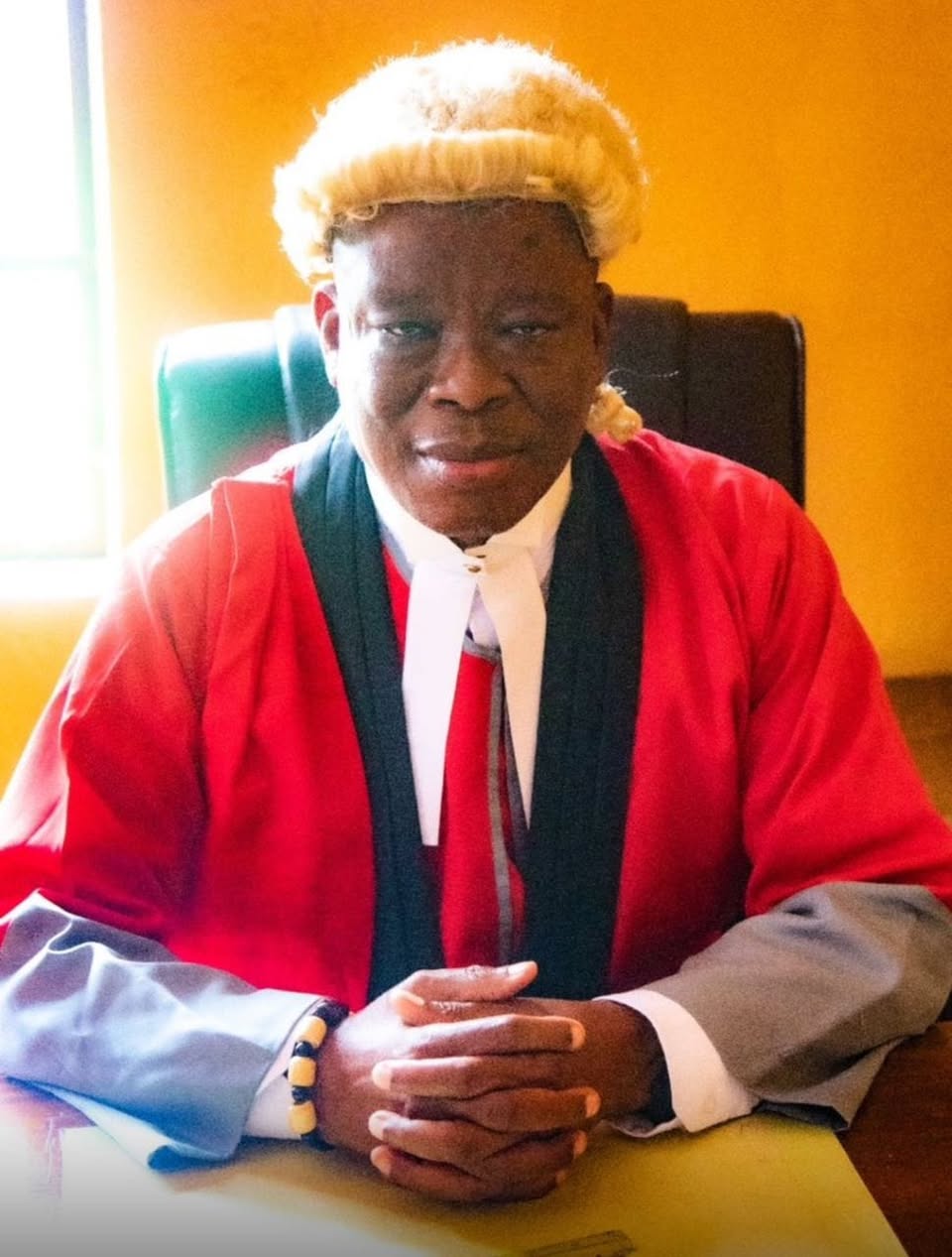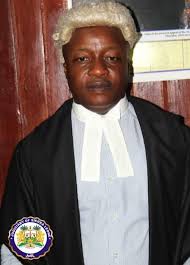Introduction
This article explores whether Theophilus Pratt & Another (hereinafter referred to as plaintiffs) v. Dr. Turad Senessie & Others (hereinafter referred to as defendants) (2024) SC. Misc. AppNo.7/2024 (unreported) is primarily about ownership rights (title declaration) or about constitutional protection of property rights (fundamental rights under Section 21 of the 1991 Constitution). It examines its impact on property law, government accountability and human rights.
Overview of the Case
The case involves a dispute between the plaintiffs and the defendants concerning a parcel of land at Peninsular Road, Mamah Beach, in the Western Area of the Republic of Sierra Leone. The defendants entered the said land, claiming it was state property. The plaintiffs instituted an action by an Originating Notice of Motion in the Supreme Court for a declaration that the said land was theirs and that their fundamental human rights had been infringed contrary to section 21 of the Constitution of Sierra Leone Act No.6 of 1991.
The Central Legal Issues
The plaintiffs, in instituting this action, prayed for several declarations. The Honourable Justice Glenna Thompson J S C, in her judgment, limited the central legal issues to the following: whether
- the land in question was state land?[1]
- the plaintiff has good title?[2]
- the plaintiffs’ human rights were infringed contrary to section 21 of the Constitution?[3]
- the defendants committed an Act of trespass?[4]
Analysis of the Judgment
The learned Justice, in dealing with the central legal issues aforementioned, opined as follows:
- Whether the land in question was state land?
In answering whether the plaintiffs’ land was State land, the learned Justice was informed by the State Lands Act No.19 of 1960 and the case of Mustapha Abu Tarraf v Dr. Dennis Sandi and others[5].
The State Lands Act supra is instrumental in dealing with whether a land in question is a state land as it provides for the management and disposal of State Lands.[6] Section 2 of the said Act defines ‘State Lands’ as
“all lands which belong to the State by virtue of any treaty, cession, convention or agreement, and all lands which have been or may hereafter be acquired by or on behalf of the State for any public purpose or otherwise however and the land acquired under the provisions of the Public Lands Act and includes all shores, beaches, lagoons, creeks, river estuaries and other places and waters whatsoever belonging to, acquired by, or which may be lawfully disposed of by or on behalf of the State.”[7]
Further, the learned Justice opined that the land had a Licenced/land surveyor (LS) number, which is common for privately owned property. In reaching her conclusion, she relied on the dictum of the Honorable Justice Halloway in Mustapha Abu Tarraf v Dr. Denis Sandi and others,[8] in which he opined that “The Director of Surveys and Lands would not have signed the survey plans and approved them as private properties with the full knowledge that they are State Lands.”[9]
Additionally, Justice Thompson JSC stated that the signing role of the Director of Survey and Lands is not merely perfunctory as purchasers rely on it as a crucial step in ascertaining that the land they are buying is not State land. Thus, the Honorable Justice Thompson concluded that the land in question was not a State Land.
In reaching that conclusion, the learned Justice was rightly informed because the land in question does not fall within the purview of section 2 of the State Lands Act supra. The State had no document to show that the said land was given to them by a treaty, concession, or otherwise, and neither was it within the requirements for a land to be compulsorily acquired nor was it within the remit of a land being acquired or belonging to the State.
Additionally, her emphasis on the role of the Director of Survey and Lands is noteworthy as it is a wake-up call to the persons in charge to take the performance of their duties seriously, as it is crucial in determining whether or not a land is state land or privately owned.
- Whether it was the plaintiffs who owned the land?
A declaration of title to land was one of the reliefs sought by the plaintiff. In deciding this, the learned Justice relied on Seymor-Wilson v Musa Abess and the Limitation Act. No 51 of 1961. She looked at the Limitation Act supra because the root of title can be traced to a possessory title instead of a documentary title.
She reiterated that “it is a well-settled principle of law that the plaintiffs must succeed based on the strength of their title rather than relying on the weakness of the Defendant’s case“[10] Further, she opined that “possessory title is a valid form of title.“[11] However, reliance on mere possession is not sufficient, the plaintiff should also show that they had occupied the land for more than 12 years and no adverse claim had been made by the owners of the land. Additionally, she opined that “a plaintiff who was in possession before the defendant has a superior title than the defendant“.[12] Therefore, she concluded that the Plaintiffs have a valid and enforceable title, and each is the fee simple owner of their respective portions of land.
Declaration of title in favour of the plaintiffs was informed by the facts of the case and her Ladyship rightly decided in their favour based on the authorities she relied on. The defendants never claimed the land during the twelve-year span in which land cannot be claimed adversely. To come after that window means they have lost their right of claim and they may have to use another means to reclaim the land.
- Have the plaintiffs’ human rights been infringed contrary to section 21 of the Constitution?[13]
As discussed in the aforementioned issues, the learned Justice concluded that the land in question was not state land and belonged to the plaintiffs. The learned Justice had to decide whether there had been an infringement of the plaintiffs’ human rights.
She relied on section 21 of the Constitution supra which deals with the protection from deprivation of property.[14] Section 3 of the Public Lands Act, Cap 116 of the Laws of Sierra Leone, 1960 provides for compulsorily acquiring land.[15]
The above-mentioned laws provide ways in which privately owned properties can be compulsorily acquired by the State. The learned judge held that the facts of this case do not fall within that purview, and as such, the plaintiffs’ fundamental human rights have been infringed.
Thus, she concluded that their rights had been infringed contrary to section 21 of the Constitution supra because it did not fall within the provisions of section 21, nor did they follow the steps provided for in section 3 of the Public Lands Act supra.
- Whether the defendants have committed acts of trespass?
The learned Justice opined that to prove trespass, it is unnecessary to prove ownership. What is important is whether the person is in possession of the land in question.[16] In this instance, the plaintiffs were in possession of the land in question, and the defendants wrongfully entered the land, destroyed the plaintiff’s fences, chased the plaintiffs’ workers off the land, and claimed the land was state land.
Thus, she concluded that it was an unauthorized entry onto both pieces of land, which amounts to trespassing. As such, the plaintiffs were entitled to damages.
Declaration of Title vs. Protection of Fundamental Rights: Was it Necessary to Prove a Declaration of Title?
There is no doubt, as previously discussed, that the plaintiffs’ rights were infringed. The question, however, is whether proving a declaration of title was necessary. In my view, it was essential, as establishing a right’s violation requires demonstrating both the existence of that right and a valid basis for the claim. You cannot simply assert that the land is yours and that the government has unlawfully entered it, violating your human rights; you must first demonstrate your ownership to establish a basis for the claimed infringement.”
Chapter three of the Constitution of Sierra Leone supra provides for the recognition and protection of Fundamental Human rights and Freedoms of the individual.[17] Specifically, section 21 of the Constitution deals with the protection from deprivation of property, and it provides instances in which land can be compulsorily acquired.[18]
In this instance, based on the judgment of the learned Justice Glenna, the rights of the plaintiffs were infringed upon contrary to section 21(1) of the said Constitution which states that:
“No property of any description shall be compulsorily taken possession of, and no interest in or right over property of any description shall be compulsorily acquired, except where the following conditions are satisfied….[19].
These conditions can be for public safety, public morality, public health, public order, and the interest of defence.[20] As stated above, the defendants entering the land did not fall within the purview of the exceptionable circumstances in section 21 of the Constitution or section 3 of the Public Lands Act supra. As such, the plaintiff had a case for the protection of their fundamental rights.
Further, Section 21(5) of the Constitution supra provides that:
“Where any such property as is referred to in subsection (4) is not used in the public interest or for the public purposes for which it was taken or acquired, the person who was the owner immediately before the compulsory taking or acquisition, as the case may be, shall be given the first option of acquiring that property, in which event he shall be required to refund the whole or such part of the compensation as may be agreed upon between the parties thereto; and in the absence of any such agreement such amount as shall be determined by the High Court”[21] [Emphasis added].
In this instance, though it was not a case of compulsory acquisition, in those matters it is necessary to know who the owner of the land is because it helps the Court in deciding on who should acquire the property.
Additionally, it was necessary to prove a declaration of title because the defendants asserted by conduct prior to the action being instituted that the said land was a state land. The Defendants engaged ,military apparatus to force the Plaintiffs out of their land. That was the source of controversy for which the Plaintiffs sought an enquiry as to their rights and a declaration relative to their right as captured in section 21 of the constitution. Thus making it essential to prove the plaintiff’s title.
Impact of the case – Will this judgment serve as a breakthrough to our protection of properties?
This case has been considered a landmark judgment by citizens of Sierra Leone through their Facebook comments when it was posted on the Judiciary of Sierra Leone’s Facebook page on the 8th of February 2025.
However, to determine if this indeed is a breakthrough judgment must be left to time and the subsequent actions of the Minister of Lands and the Government of Sierra Leone in terms of grabbing lands belonging to private people, stating that same is state land.
Nonetheless, the importance of this judgment cannot be undermined as there is now a clear judgment given by the highest court of the land on matters relating to land grabbing, which all lower courts shall follow.
Does the Minister have a recourse?
The learned Justice gave judgment in favour of the Plaintiffs and ordered that the defendants should vacate the lands in question and that the 1st plaintiff must be paid NLe 150,000.00 and the second plaintiff should be paid NLe 110,000 within 60 days of the judgment. In this instance, the Minister does not have recourse as they had an opportunity to be heard, but they did not make use of it.[22]
Firstly, the Court noted that they were served by Ibrahim Sorie Bangura, a solicitor’s clerk who swore to two affidavits of service. Thus, they had notice of the proceedings but were not present in Court on the 9th of December 2024 when the matter was first heard. The Court further asked that they be served with a notice of hearing, which also proved futile.
Secondly, Ibrahim A. Sidibay deposed that he searched the records of the Supreme Court Registry and could not find a statement of the case for any of the defendants. Thus, the Court ruled that the defendants had not filed their statement of case within the stipulated time in Rule 92(3) of the Supreme Court Rules, 1982, and as such, the matter can proceed in their absence pursuant to Rule 96(2) supra.
Thus, the defendants have no recourse based on the facts of this case; they can only have a cause of action for the land in question if they approach the Court based on the right procedure as outlined in section 21 of the Constitution supra and section 3 of the Public Lands Act supra.
Conclusion
In analyzing Theophilus Pratt & Another v. Dr. Turad Senessie & Others, this article has underscored that, while the case fundamentally addresses a breach of constitutional rights under Section 21 of Sierra Leone’s 1991 Constitution, the adjudication of title declaration was both relevant and necessary. Justice Glenna Thompson’s approach—grounding her ruling in property law principles alongside constitutional safeguards—reinforced the plaintiffs’ ownership and highlighted the State’s failure to adhere to lawful acquisition processes. Far from being a procedural detour, establishing title was pivotal to substantiating the rights violation claim. As for the Minister’s position, the absence of timely engagement with the judicial process leaves no immediate recourse; any future claim must align strictly with the legal frameworks of Section 21 of the Constitution and the Public Lands Act. This landmark ruling clarifies the interplay between property rights and constitutional protections and sets a precedent that may reshape land dispute adjudication in Sierra Leone—its true impact awaiting the test of time and governmental response.
Anisha Kahunwa is a pupil in the Law Firm of OJP Legal
[1] Theophilius Pratt and another v Dr Turad Senessie and others [2024] Unreported (Supreme Court).
[2] ibid.
[3] ibid.
[4] ibid.
[5] Mustapha Abu Tarraf v Dr Dennis M Sandy and others [2020] Unreported (Supreme Court of Sierra Leone).
[6] State Lands 1960.
[7] ibid.
[8] Mustapha Abu Tarraf v Dr. Dennis M. Sandy and others (n 6).
[9] ibid.
[10] Dr CJ Seymour-Wilson v Musa Abess [1979] Unreported (Supreme Court of Sierra).
[11] Theophilius Pratt and another v Dr. Turad Senessie and others (n 2).
[12] ibid.
[13] ibid.
[14] The Constitution of Sierra Leone.
[15] Public Lands Act.
[16] Theophilius Pratt and another v Dr. Turad Senessie and others (n 2).
[17] The Constitution of Sierra Leone.
[18] ibid.
[19] ibid.
[20] ibid.
[21] ibid.
[22] Theophilius Pratt and another v Dr. Turad Senessie and others (n 2).







